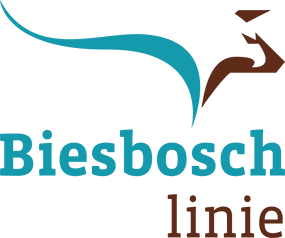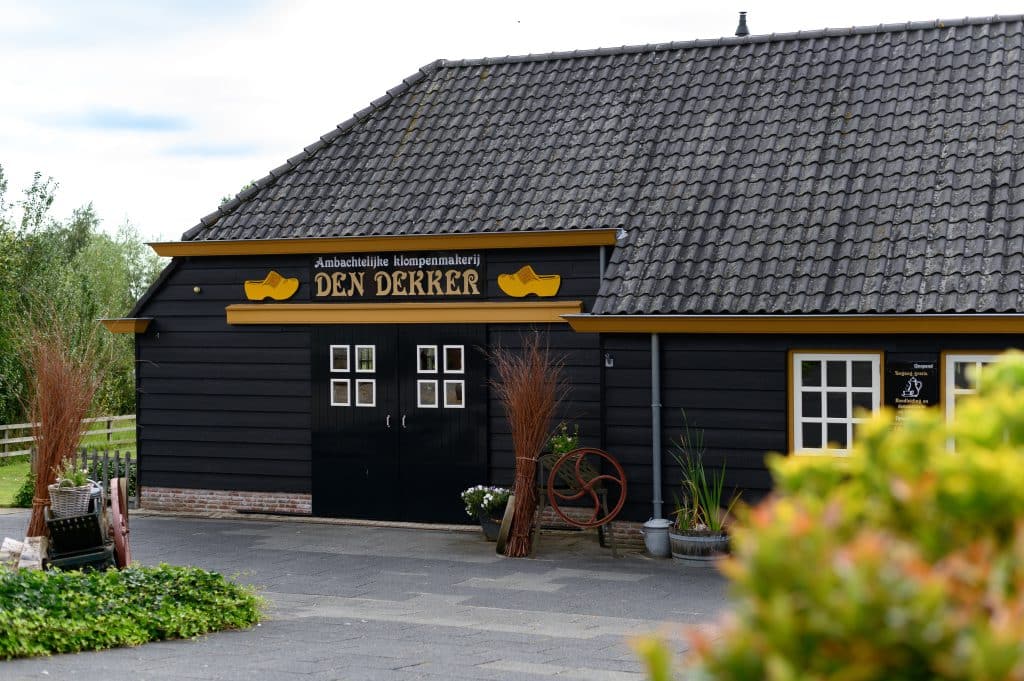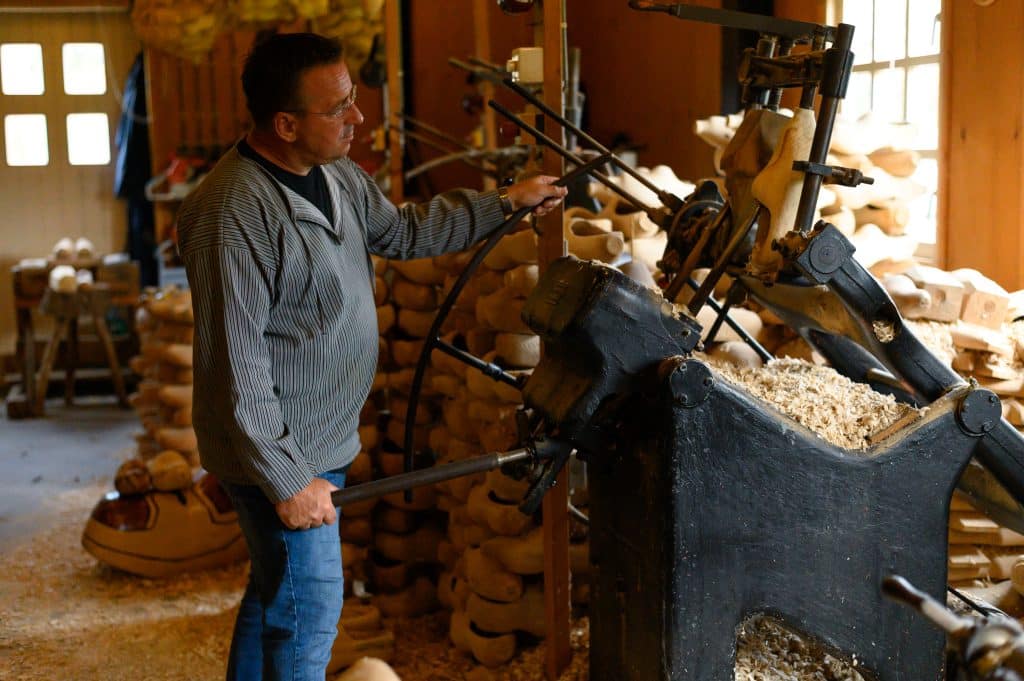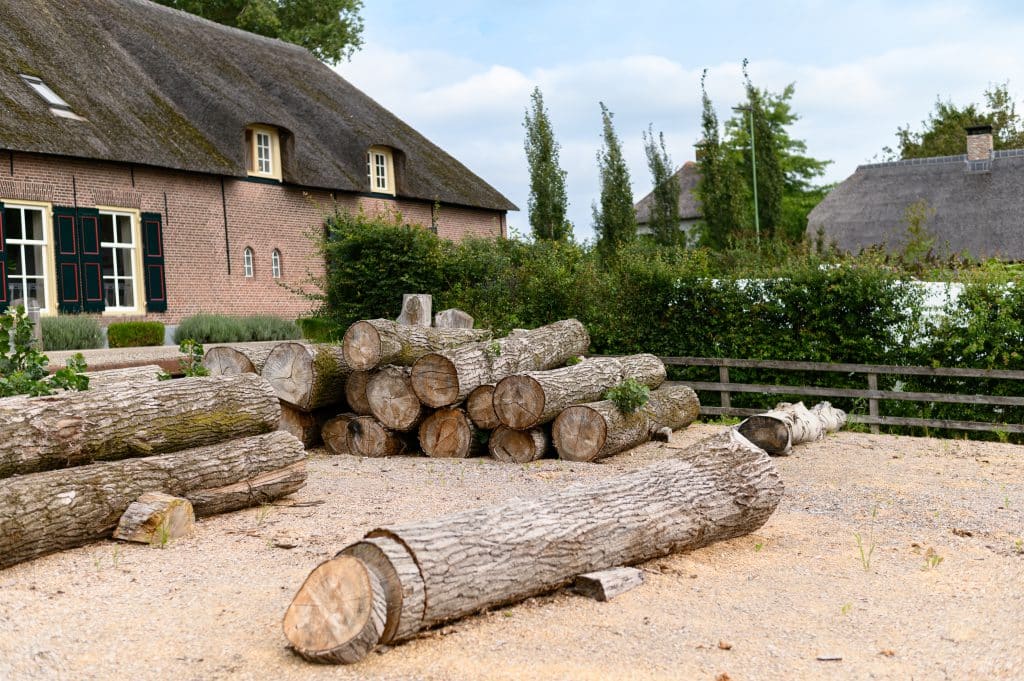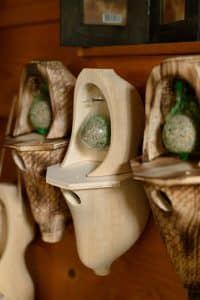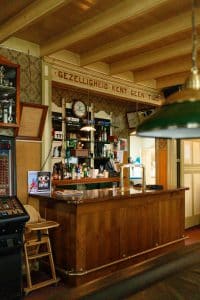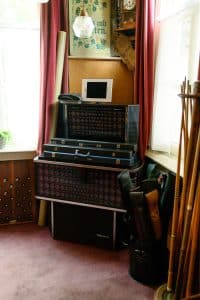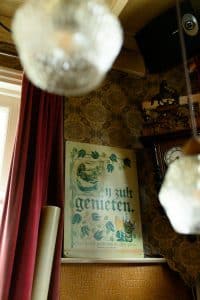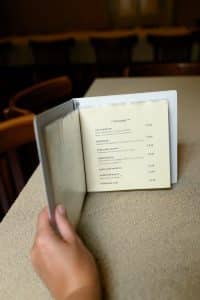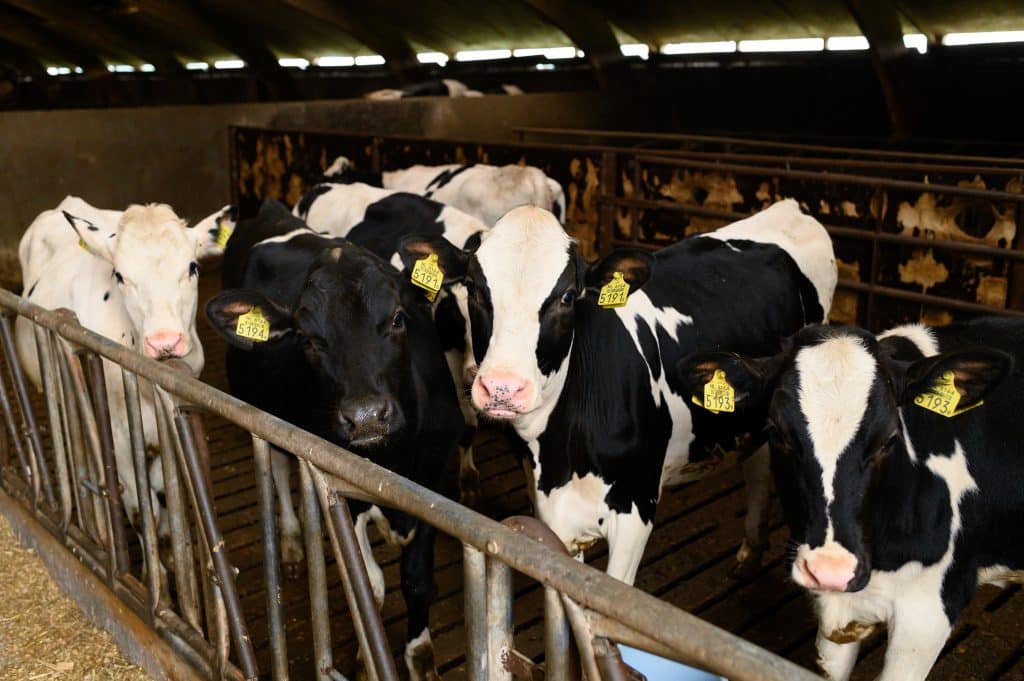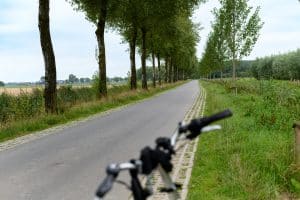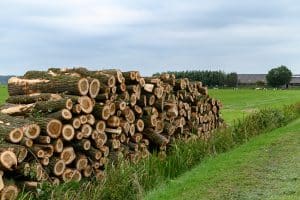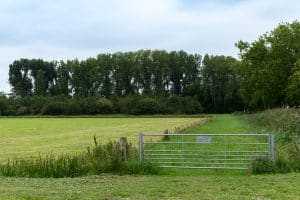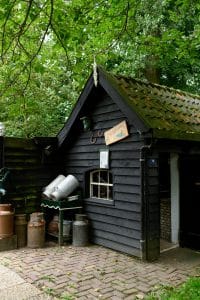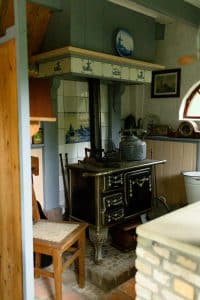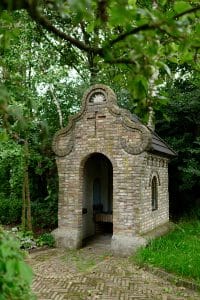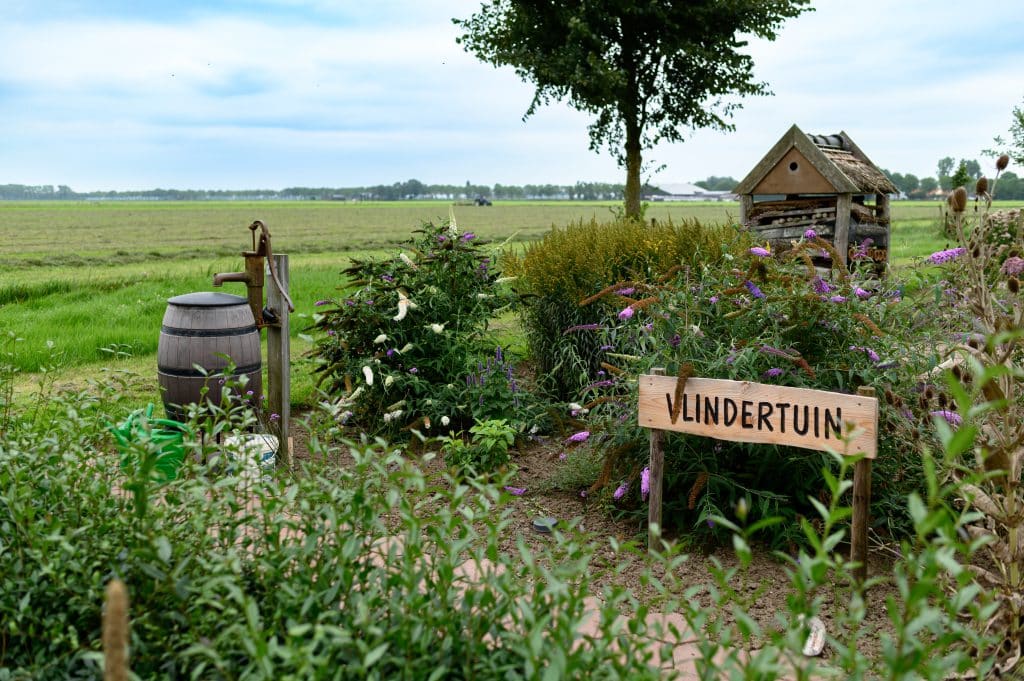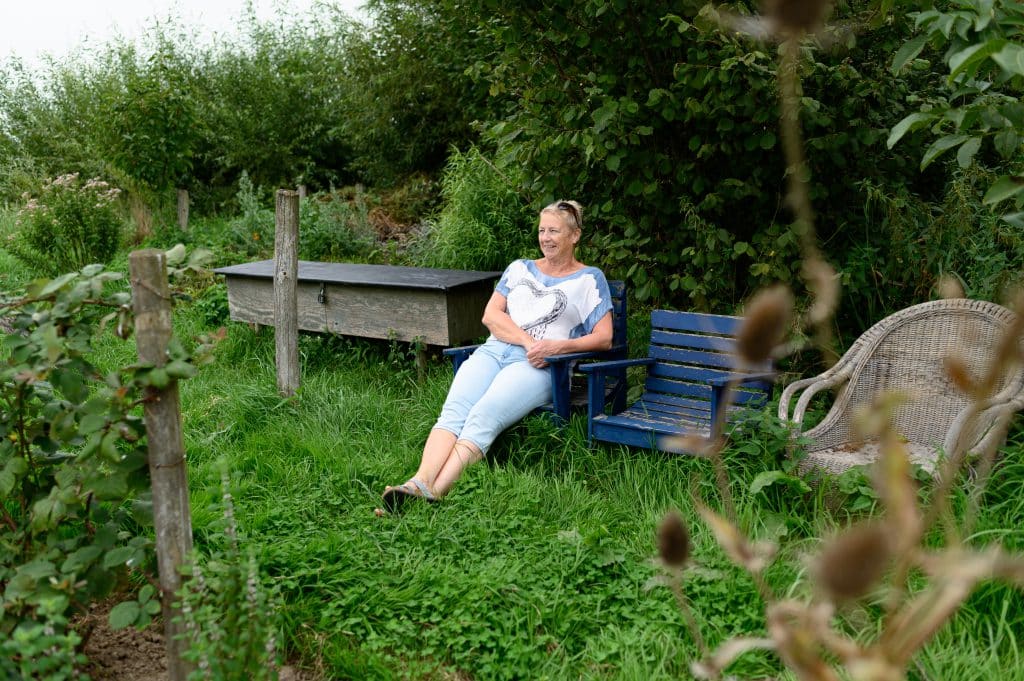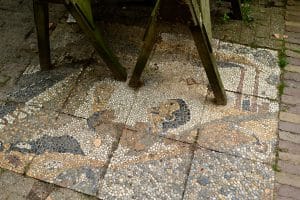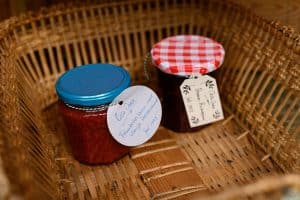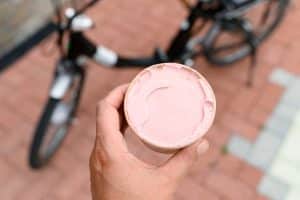When my lunch is behind my teeth, I walk with Suzanne through the back door. While walking, she tells the story. Café 't Zwaantje was once started by her ancestors. She, with her husband who is in the kitchen, is the fourth generation to keep the café running. Once really started as a café, but over time some cows joined the business. Those were in the barn adjacent to the café I'm walking through now. A spacious barn has since been built in the yard. Only the little pinks can be petted, the cows are happily walking in the pasture. "Over forty dairy cows. We use the milk and meat in our café," Suzanne beams proudly.
